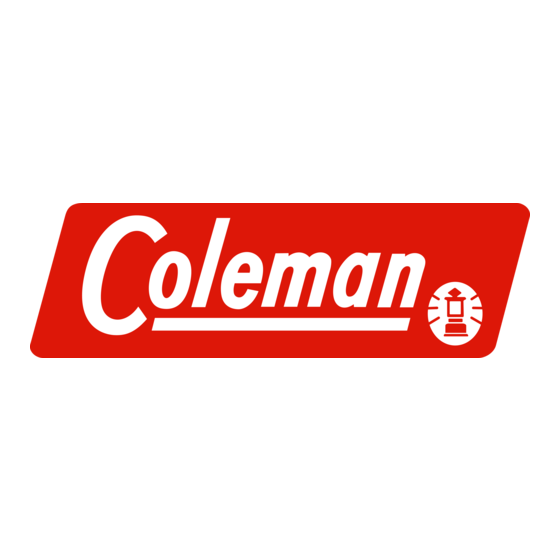
Subscribe to Our Youtube Channel
Summary of Contents for Coleman CDB76CF
- Page 1 CDB76CF I N S T R U C T I O N S & O W N E R ’ S M A N U A L Please retain the packaging and instructions for further reference, as they contain important information.
- Page 2 PARTS LIST FOR CDB76CF Telescope: A. Telescope Optical Tube B. Dobsonian 360° Rotatable Base C. Eyepieces (H6, H20) D. Eyepiece Cases (2) E. 1.5x Erecting Lens F. 2x Barlow G. Tension Control Knob H. Astrowatch Software CD (not shown) Moon filter (not shown) Please retain the packaging and instructions for further reference, as they contain important information.
- Page 3 With the proper care and handling of your telescope, you will enjoy years of viewing pleasure. As an astronomical device, the CDB76CF telescope has been designed for both a beginner and advanced star gazer. It provides views of the moon and planets, as well as dozens of galaxies, star clusters, and nebulae.
- Page 4 3) To position the telescope to the desired angle, loosen the Tension Control Knob and move the telescope tube up or down and/or swivel the telescope around the Dobsonian base. See (FIG. 2). When loosening or tightening the Tension Control Knob, add just enough friction to allow the tube to move easily when nudged, but to stay in position when not.
-
Page 5: About Magnification
A. COMPLETE THE FOLLOWING SETTINGS IN DAYLIGHT: 1) Insert the H20mm eyepiece into the eyepiece holder. Position the telescope as described in number 3) above. Look at an easily recognizable, stationary object that is at least 100 feet away. Slightly loosen the Tension Control Knob to adjust the altitude of the telescope and/or rotate the telescope around its base to adjust the horizontal position. - Page 6 10mm of objective lens diameter. Another good rule of thumb is that the usable magnification of a telescope is about 3x per mm of the aperture (for the CDB76CF, the aperture is 76mm) under good conditions. Thus, magnification of around 225x or less is ideal for a telescope with a 76mm diameter objective mirror (aperture) and is best for observing most celestial objects.
- Page 7 3) Find a location far from glaring light. If you live in an urban area, your viewing will probably improve the farther you move away from the city’s lights. The sky glow of a town or city can dramatically reduce the telescope’s performance and viewing capabilities. 4) Remove the dust cap from the end of the telescope nearest the eyepiece holder.
-
Page 8: Care And Cleaning Of The Optics
When possible, avoid sudden temperature changes, as the moisture in the air will condense on the mirrors and eyepiece lenses. Should this occur after bringing your telescope indoors, remove the dust caps and allow the moisture to evaporate naturally. Point the telescope downward to minimize the collection of airborne dust. - Page 9 If, after several attempts, you cannot remove the particles, take the telescope to an optical professional for cleaning. If you keep the dust caps on your telescope when it is not in use and avoid handling the lenses or mirrors, only minimal optical maintenance of your telescope should be required. Extensive cleaning is usually only necessary every few years.
- Page 10 Each of the planets provides interesting views. Venus is covered with clouds so all that is visible is an extremely bright light, the brightest next to the moon. However, Venus, like the moon, goes through phases. As it travels around the sun, different areas of its surface are illuminated, producing crescent shapes of varying sizes.
-
Page 11: Frequently Asked Questions
FREQUENTLY ASKED QUESTIONS: 1) How far can I see? If you stand outside and look up at the night sky on a clear evening, you can see hundreds of stars without the aid of your telescope. The telescope is a light-gathering instrument that magnifies the view—providing significantly more detail and unveiling more stars, nebulae, and celestial objects. - Page 12 Elite Brands Inc. 40 Wall Street 61st Flr. New York, NY 10005 Tel: 1-800-441-1100 ©2021 ©2021 Elite Brands Inc., New York, NY 10005...




Need help?
Do you have a question about the CDB76CF and is the answer not in the manual?
Questions and answers